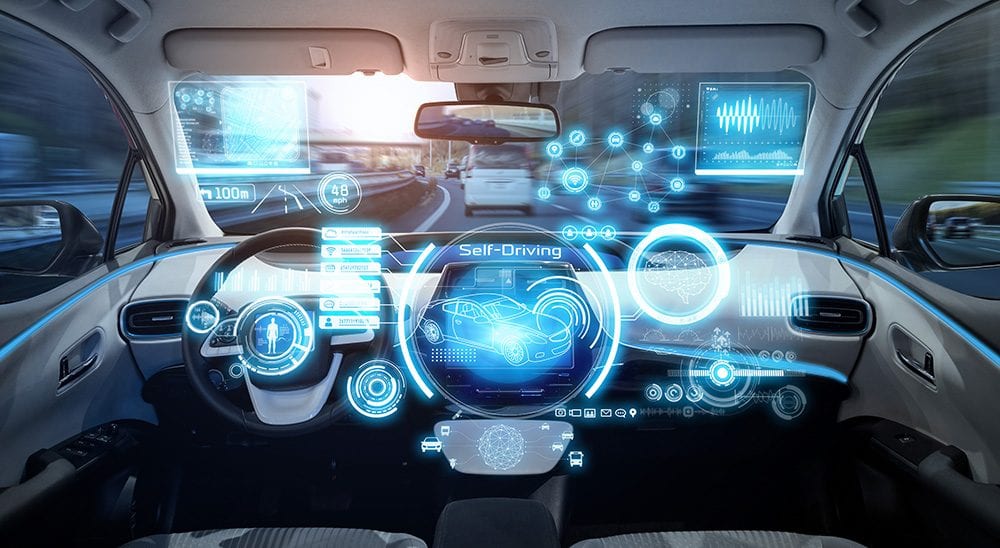Wi-Fi or 5G: Which is best for IoT?

Credit: Shutterstock
With the imminent rise of 5G and the new Wi-Fi 6 update, which is the best choice for IoT devices? We take a look at the advantages and disadvantages of each.
Wi-Fi was revolutionary for homes and offices alike. No need to plug in; full freedom to roam around the house and garden. 4G took that freedom further.
When Wi-Fi was first introduced, it felt incredible for the internet to be all around us. That’s where 5G is set to take us. With faster download speeds and lower latency, the internet is set to get speedier than ever across the country, with 4G set to be installed across 95% of the country by 2020.
The conversation around 5G however tends to revolve around individuals. What is your current download speed and how many times quicker will it be with 5G? That’s an exciting enough thought, as hard as it is to imagine.
If you’ve ever been to a densely populated area and tried to use 4G though – a concert or sporting event perhaps – this is where the potential of 5G starts to really make sense. It’s incredibly difficult to receive good quality 4G in big crowds, as the rush of users getting onto the network slows it down for everyone else. 5G will allow quicker connection and more stability, but most importantly, it’ll allow more connections.
This is where IoT comes in.
There’s a case for using 5G over Wi-Fi with IoT
You probably started with a laptop. Then a smartphone. Many homes now have a Google Assistant or Alexa in the corner. If you’re particularly gadget-savvy, you may have invested in Nest, Hue bulbs or something else that your grandparents would describe as “very Star Trek”.
Our IoT device count is rising. Especially for businesses. 5G is offering a reliable alternative to Wi-Fi right now when it comes to keeping all these machines running. 5G is easier to connect your smart devices to and has an easier out-of-the-box set-up: it makes sense to connect IoT to 5G, especially in workplaces that are located outdoors.
So should you connect to Wi-Fi or 5G? The answer isn’t necessarily as simple as whichever one loads your mobile page quicker.
The German government is setting aside 100 MHz of licensed spectrum for industrial use. Volkswagen plans to implement a private 5G network to support its manufacturing systems on that spectrum. By using a private network, the car manufacturer hopes to use large industrial IoT data for more intelligent and efficient operations. The company is not alone in this approach.
Imagine tracking deliveries. This is something that many companies are implementing emergent technology such as blockchain in and using 5G for the entire journey, from warehouse to destination, makes more sense than using Wi-Fi. There are lots of companies too that offer complimentary Wi-Fi at a cost both financially and to their own internet speeds, which 5G could help alleviate.
The reported enhanced security options and real-time monitoring of the technology make it an exciting choice, too.
It’s likely that businesses will opt for both 5G and Wi-Fi
September will mark Wi-Fi’s 21st birthday. The supposed older sibling of cellular networks, Wi-Fi’s naming conventions have never been as snappy as “4G” or “5G”. Wi-Fi 6 will retcon all previous versions to Wi-Fi 5, Wi-Fi 4 and so on.
Many aren’t even aware that there are different versions of Wi-Fi. The headlines are however that Wi-Fi 6 is 3.5 Gbps quicker than Wi-Fi 5 and Wi-Fi hubs will come with the version number assigned to it in future.
So should you connect to the Wi-Fi hub that’s just seen a solid update or plump for the super-fast 5G? The answer isn’t necessarily as simple as whichever one loads your mobile page quicker.

Industrial IoT businesses will likely choose both options. Both Wi-Fi and 5G offer significant advantages: there’s no right answer. Businesses need to work out their data flow requirements and which option complements their existing IT infrastructure. Whether the business is tracking assets or making use of IoT machinery, there is a lot to consider. Perhaps the easiest option is simply to upgrade the Wi-Fi across the business before working out which aspects of the company can make the transition over to 5G.
Ultimately, 5G is somewhat of an unknown frontier for business. 4G is nowhere near powerful enough to run most operations and 5G could come with unforeseen difficulties for a lot of IoT devices.
IoT devices will evolve with Wi-Fi and 5G
Technology doesn’t develop in a vacuum. The Amazon Echo, for example, is a product of its time: reliant on edge computing, Natural Language Processing (NLP) and Wi-Fi. Upgrade one of those aspects and the gadget improves as a result.
So when we think of how IoT devices could work with 5G, we perhaps aren’t considering the full capabilities of how 5G will improve the Internet of Things.
From a consumer standpoint, expect the fridge you buy in a decade’s time to be 5G-enabled. It could be possible in a few years to charge your phone with Wi-Fi. Now consider how businesses will be able to improve simple tracking devices and machinery with real-time, surround cellular coverage.
The best thing about 5G is potential. If this technology is truly like nothing we’ve ever seen before, expect the rest of technology to catch up and surprise you. In the meantime, we can’t rule out the full freedom of Wi-Fi.
